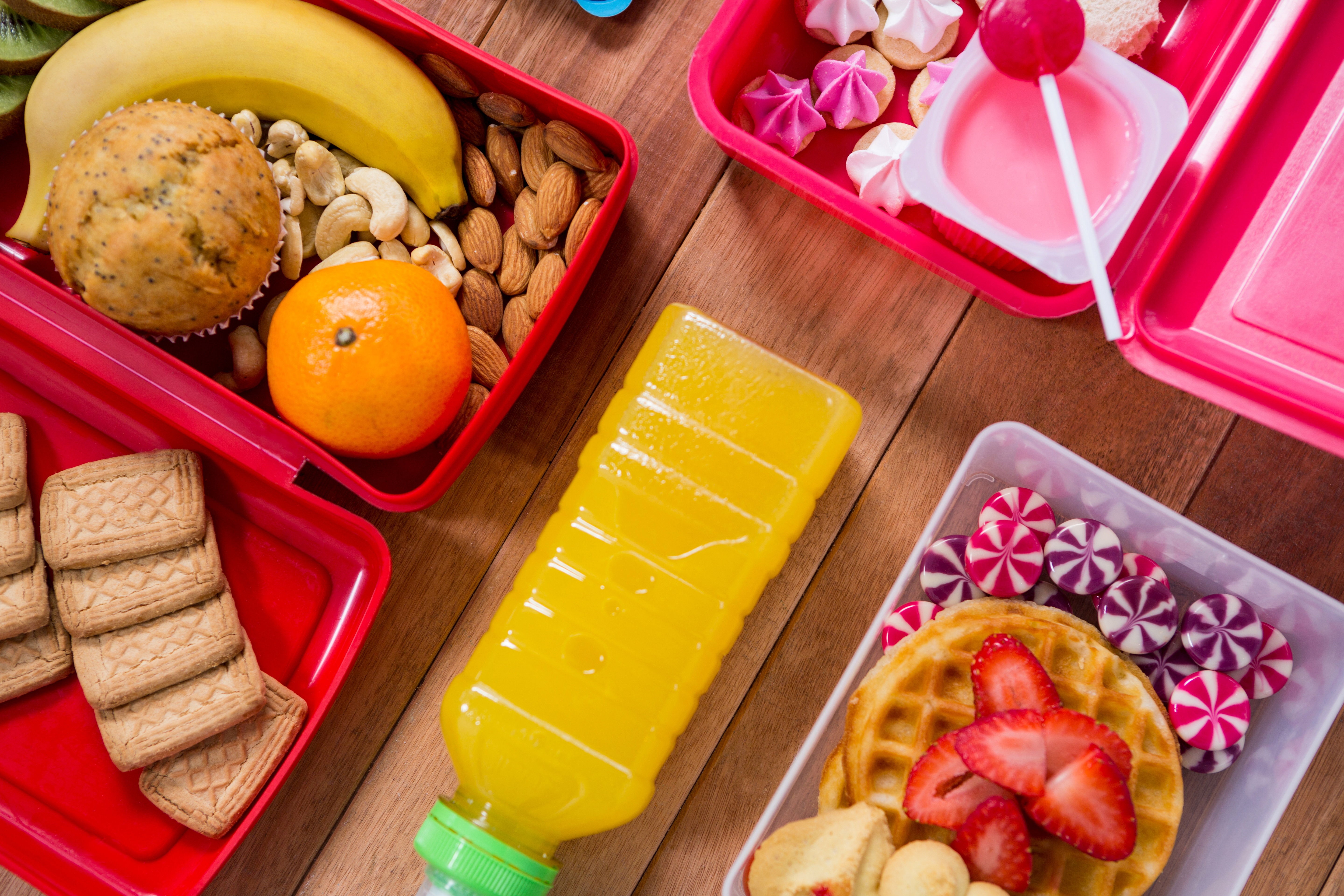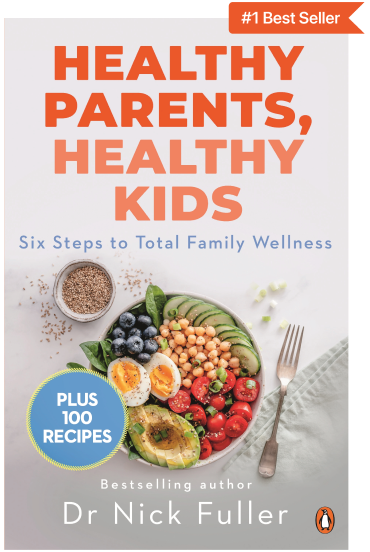From Snacks to Staples: Kids Lunchbox Essentials You Can’t Miss

Dr Nick Fuller
Leading Obesity Expert at the University of Sydney and founder of Interval Weight Loss.

Packing a school lunch that’s healthy, tasty, and survives until the lunch bell isn’t always easy. But with the right gear and a few clever prep tricks, it’s totally doable. The Australian Institute of Health and Welfare shows that around 96% of Australian children don’t eat enough vegetables each day, making the lunchbox a key opportunity to sneak in extra nutrition. A balanced lunch not only fuels energy but also supports learning and concentration. Studies link better diet quality with improved academic performance in kids.
So, what do you really need to make lunch-packing smoother and smarter? Let’s dive into the essentials, what to pack, prep tips, and a few hacks to keep the whole process stress-free.
Lunchbox Drama? Find the Formula for Stress-Free Packing.
If packing the lunchbox feels like a daily headache, you’re not alone. Healthy Parents, Healthy Kids by Dr Nick Fuller offers practical solutions to help parents create healthy, balanced lunchboxes kids will actually eat. With expert advice on variety, balance and presentation, this book takes the stress out of school-day meals.
Turn lunchbox prep from a struggle into a breeze. Grab your copy of Healthy Parents, Healthy Kids today and pack with confidence.
Essential Items for Packing Lunch
Before you start thinking about what food to include, having the right gear makes all the difference. The right lunchbox setup keeps food safe, organised and appealing for kids when it’s finally time to eat. Here are some essentials that will make packing smoother and more reliable every day.
Sturdy, insulated lunchbox
A high-quality, insulated lunchbox helps keep food fresh and safe until lunchtime. Without insulation, perishable foods like dairy, meat or eggs can quickly reach unsafe temperatures. Food safety guidelines from Food Standards Australia highlight the importance of keeping lunches at 5°C or colder (or 60°C or hotter) to reduce the risk of foodborne illness, especially in warmer months.
Reusable containers and bento boxes
Investing in reusable containers or bento boxes not only saves money but also reduces waste. A study of 673 Australian children’s lunchboxes found that single-use packaging made up 53% of all packaging, mainly from snacks and grain foods. Switching to reusables helps cut this waste while also making lunches look more appealing. Bento boxes are especially useful for portion control and variety, encouraging kids to enjoy balanced meals with fewer packaged snacks.
Leak-proof dip/sauce containers
Little tubs for hummus, yoghurt, or dressings can make healthy options more appealing. Kids are more likely to eat their veggies when they come with a fun dip. Leak-proof containers also save you from the dreaded soggy sandwich or messy backpack situation.
Reusable snack bags or silicone pouches
Instead of plastic wrap, silicone pouches or fabric snack bags are sustainable and durable. They’re also great for portioning snacks like popcorn, trail mix, or veggie sticks. Many are dishwasher-safe, making clean-up a breeze for busy families.
Ice packs to keep food fresh
Ice packs are a must if your child’s lunch contains perishable items. Studies show that bacteria can double in just 20 minutes at room temperature, so keeping food cool is key to food safety. Place ice packs above and below the food for best results.
Reusable utensils and napkins
A set of kid-friendly utensils and cloth napkins makes lunchtime easier and greener. Not only do they cut down on single-use plastics, but they also help teach responsibility as kids remember to bring them home.
Thermos for soups, pasta, or warm meals
A good thermos expands your lunch options beyond cold sandwiches. Hot meals like pasta, fried rice or even soup can provide comfort and variety, especially in winter. A thermos keeps food warm for up to 5–6 hours, making it a worthy investment.
What to Pack in a Lunchbox
Once the basics are sorted, the next step is filling that lunchbox with a mix of nutrients and flavours.
Protein options
Protein helps kids stay full longer and supports growth. Options like cheese sticks, boiled eggs, turkey slices, chicken or beans are all lunchbox-friendly.
Fruits
Fresh fruits like apple slices, grapes, berries and oranges add natural sweetness and fibre. Around 36% of Aussie kids do not meet the recommended daily serves of fruit, so packing them at lunch is a smart move. Choose varieties that are easy to peel, bite-sized, or already portioned.
Veggies
Crunchy veggies, such as cucumber sticks, cherry tomatoes, carrots and snap peas, are easy to prep and fun to eat. Including a dip like hummus or tzatziki can boost their appeal. Brightly coloured veggies not only look exciting but also provide a variety of nutrients.
Carbs
Whole-grain bread, wraps, crackers or pasta salads provide steady energy throughout the day. Compared to refined carbs, whole grains release energy more steadily, helping kids avoid the mid-afternoon slump. Pair them with protein and veggies for a balanced meal.
Healthy fats
Avocado, hummus, or sunflower seed butter (a nut-free alternative for allergy-friendly schools) are great for satiety. Healthy fats support brain development, and research shows omega-3s in particular can boost learning and memory in kids.
Hydration
A reusable water bottle or thermos is non-negotiable. Dehydration, even mild, can affect concentration and mood. Encourage kids to sip water throughout the day, especially during summer or after sports.
Treats in moderation
A small treat, like a mini muffin, dark chocolate square or homemade snack bar, makes lunches exciting without going overboard. Including treats occasionally can help kids feel included when friends bring theirs, while still keeping balance front and centre.
No-Stress Lunchbox Prep & Organisation Hacks
Having healthy foods on hand is one thing, but making sure they actually get packed and eaten is another. A little preparation can save time and stress while keeping lunches exciting throughout the week. These prep tips make the process quicker and more fun.
Prep and portion ahead of time
A little weekend prep goes a long way. Wash, chop, and store fruits and veggies in containers, and batch-cook basics like pasta, rice or grilled chicken. Portioning everything ahead makes weekday packing quick and stress-free, plus, you’ll always know what’s ready to grab.
Use portion dividers to keep food fresh and appealing
Dividers help stop foods from mixing, keeping textures crisp and flavours separate. Research on child eating behaviour shows that kids are more likely to try new foods when presented in an organised, colourful way.
Mix colours and textures to keep lunches fun
A rainbow lunch isn’t just Instagram-worthy; it’s also a sign of varied nutrients. Crunchy carrots, juicy grapes and creamy hummus create a more engaging meal. Different textures also prevent kids from getting bored with the same foods.
Freeze items like muffins or waffles to rotate in lunchboxes
Baking in bulk and freezing means you’ll always have a quick option on hand. Pop frozen muffins straight into the lunchbox. They’ll thaw by lunchtime while helping keep other food cool.
Pack lunches the night before to save time in the morning
Evenings are usually calmer than rushed mornings, so packing ahead reduces stress. It also gives you a chance to include more variety instead of throwing together last-minute fillers.
Involve kids in picking and packing to boost buy-in
Kids who help pack their own lunches are more likely to eat them. Giving them a choice between two fruits or a say in the snack helps them feel empowered. This also builds healthy food habits that can last into adulthood.
Use clear bins in the fridge for grab-and-go snacks
Having prepped fruit, yoghurt or cheese sticks ready to grab speeds up packing. Clear bins also help kids make their own healthy snack choices.
Rotate older items to the front
Simple but effective, rotating ensures nothing gets forgotten at the back of the fridge. This hack helps reduce food waste, which currently costs Aussie households an average of $2,000-$2,500 per year.
Label freezer meals or baked goods with dates
Labels stop mystery containers from piling up in the freezer. Knowing when something was made helps you safely rotate items into lunchboxes.
Keep a small drawer or basket just for lunchbox gear
Having one dedicated spot for containers, utensils and ice packs saves precious minutes during the morning rush. No more frantic searching for that missing lid.
The Bottom Line
Packing a nutritious and appealing lunch doesn’t have to be a daily headache. With the right tools, smart prep strategies and a balance of proteins, carbs, fruits, veggies and healthy fats, you can build lunchboxes that fuel your child for learning, play and growth. Studies consistently show that kids with balanced diets perform better at school and maintain more consistent energy levels. So it’s worth the effort. With a little organisation and some kid involvement, lunchtime can become something both you and your child look forward to.
Make lunchbox packing stress-free with simple, tasty options! Check out our Quick 5-Ingredient Meals For Picky Eaters That Are Sure Hits — perfect for school days.
Stay informed with fresh tips, expert guidance, unique deals, and tailored support!
Meet Dr Nick Fuller
My Story
As a father, I know first-hand that raising healthy and happy children is tricky. Children are fussy, particularly at the end of the day when they are shattered. We also live in a society where companies seek to profit from what we feed our kids; incorrect and damaging advice is pushed on us and marketed towards our children, and we have no time.
But with these recipes and resources, you and your children can enjoy simple and well-founded food and lifestyle choices for lifelong health.

About Dr Nick Fuller
Dr Nick Fuller is the founder of Interval Weight Loss and is a leading obesity expert at the University of Sydney with a Ph.D. in Obesity Treatment. Dr Fuller is also the author of three best-selling books and his work been published in top ranked journals in the medical field, including JAMA, Lancet and American Journal of Clinical Nutrition.
